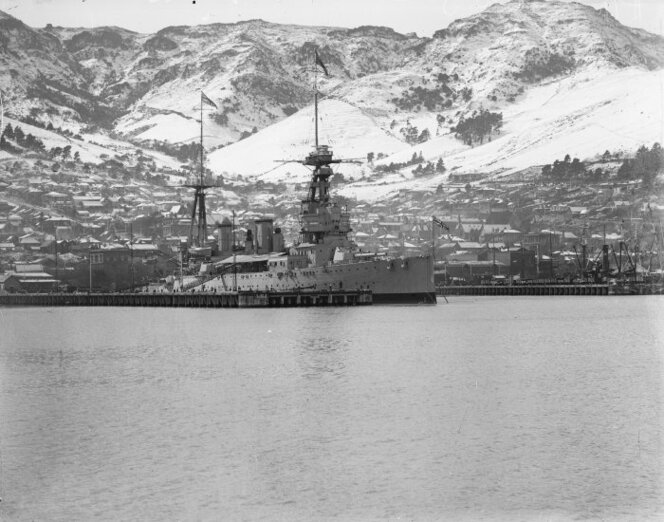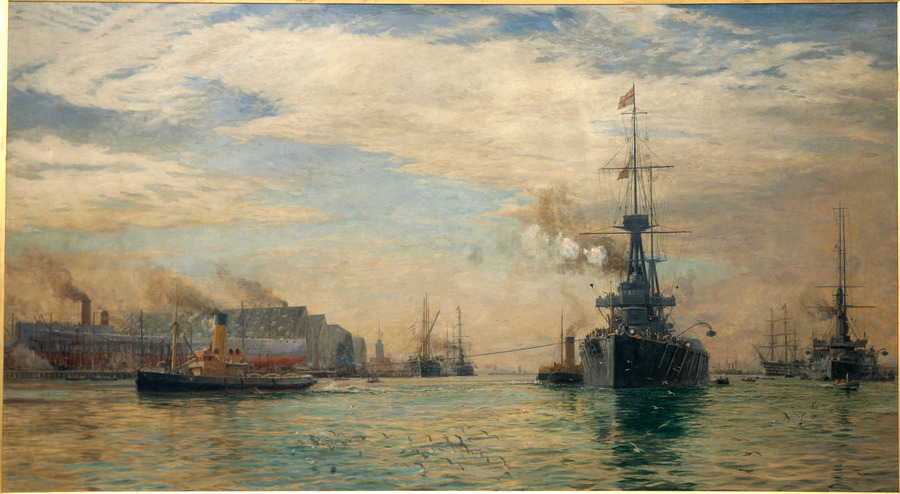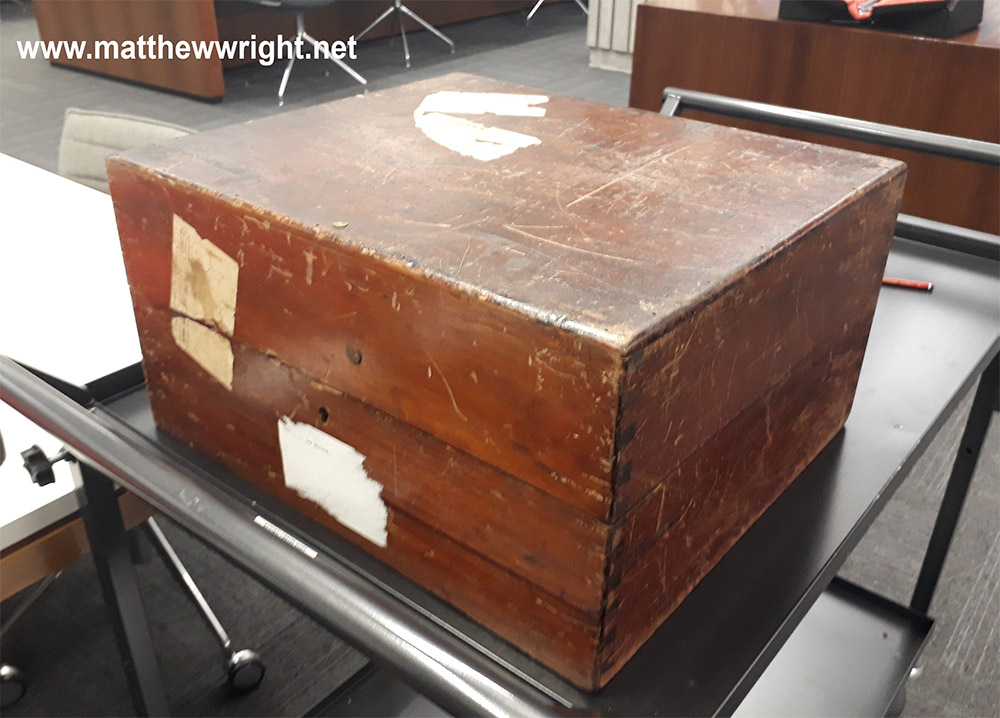The story of HMS New Zealand, the battlecruiser that the Dominion of New Zealand gave as a gift to the Empire of Britain in 1909, has been told many times. Often incorrectly. Indeed, the ship is surrounded with mythology. A variety of stories about her origin and deployment are repeated time and again – notably the idea that she was ordered for local New Zealand service but belatedly found to be unsupportable. I tracked that down to a specialist naval publication, and it’s pure fantasy. But it’s been repeated time and again.
Indeed, even reputable naval specialists such as Norman Friedman haven’t got the origin story right: he got the sequence of events surrounding HMS New Zealand’s ordering in 1909 precisely in reverse order.[1] And that’s without considering other stories surrounding the ship.
One of my aims when writing my latest book The Battlecruiser New Zealand: A Gift to Empire was to dispel many of these misapprehensions. The book was published by Seaforth in the UK and by USNI Press in the US a few weeks ago. The title describes the content: it’s about the gift to Empire, meaning the politics and people of the day as much as the ship itself. The scope extended to the career of the ship, which was present in all three major North Sea battles of the First World War.
I drew from documentary material in the National Library of New Zealand, and from other files in Archives New Zealand that hasn’t been used by British-based researchers. Material included HMS New Zealand’s Captain’s Ship’s Book, a solid mahogany box containing details of the ship’s operations, docking, and statistics – figures recorded as part of ship operations. Data included her actual trial speeds in 1912, as opposed to the numbers issued by the Admiralty for public consumption. Curiously, her one-mile speed was measured by two different methods, each of which came up with different answers, even though they were measuring the same speed at the same time. This underscores the point that, when we look at history, even empirical data often varies, meaning that the past resists being reduced to objective ‘knowledge’. Instead – as Arthur Marder tells us – history must be an ongoing discussion.
Accessing the Captain’s Ship’s Book was an exercise in itself: it’s one of the largest single objects held by the National Library’s manuscripts section. When I ordered it, the box came out on its own trolley – followed by the head librarian, who was curious. Nobody had requested it before to their knowledge (actually, someone had – me, years earlier when I wrote my thesis.)
The National Library also had copies of the builders’ plans, which I unrolled across multiple tables with the help of a librarian. They didn’t blink when I asked for copies, which I reproduced in the book. Obviously at much smaller scale.
Still, my focus in the book wasn’t to copy-and-paste engineering data – there are plenty of publications of that kind, and there was no point repeating them. I needed a certain amount of this material in terms of tackling various engineering myths, but I didn’t want to create another ‘ship engineering guide’. I stated so in the introduction – this was a wider story.
My intent was exploring the how and why of the ship as a concept – which meant investigating the politics, the people, the nature of battlecruisers, and the naval panic of 1909. That involved excavating government reports of the day, official papers, private letters and other material – all of which revealed a story of the New Zealand government trying to put one over the Australians, and failing. HMS New Zealand wasn’t the first time this had happened, nor the last, but it was perhaps the most expensive.
There was a lot more material illuminating this theme, including Admiralty files on microfilm. I also dug into the academic literature surrounding the dreadnought-era naval race and the nature of battlecruisers. One outcome was that the book has over 40 pages of endnotes and references.
Were there any surprises? Sure. One was that HMS New Zealand was the first major warship of the dreadnought era to circumnavigate the globe, in 1913-14. The journey was fascinating – a deliberate public-relations tour in which the real focus wasn’t thanking New Zealand for the gift, but currying favour around South America.
Another surprise was the extent to which Admiral Sir John Jellicoe was involved in the whole story. He was instrumental in HMS New Zealand’s development, part of the committee that developed the concept underpinning her design, initiated and pushed some of the specific technologies used aboard her; and (as Controller in 1910) managed the construction contracts and specified newer-tech armour than was fitted to her sister ship Indefatigable.
Directly after the First World War the ship was Jellicoe’s home for a year, as he toured Britain’s major Dominions advising on naval policy. His grandson Nick Jellicoe pointed me to a personal album of snapshots from the Admiral’s time aboard – including a visit from ‘King Neptune’. These had not been published. The RNZN Museum kindly gave me copies, which I coupled with a diary entry from a midshipman, describing the moment. I felt that the Admiral’s enduring part in the ship’s story had to be recognised, so I asked Nick to write the foreword – to which he very kindly agreed.
As for the misapprehensions about the ship? For all of them you’ll need to read the book, but I have to share my favourite, which turns up time and again in specialist naval publications. Supposedly the ship was too expensive for New Zealand (population just under a million), with the result that money had to be borrowed. This unaffordability was supposedly why the gift was built as a cheaper battlecruiser; and – again because it was so unaffordable – the debt wasn’t paid off for decades. None of this is correct. The fact of the debt was true, but that was because every large New Zealand government project was paid for by borrowing, then and since. The original offer was for a dreadnought of the latest type – and a second if necessary; and period numbers show that the Dominion could, in fact, have paid for two ‘first class battleships’ (as the official offer called them) without straining its finances. The reasons why the ship was built as a battlecruiser – which I explore in the book – had nothing to do with New Zealand’s ability to fund the gift.
To give that numbers, the debt for HMS New Zealand totalled just 1.89 percent of total New Zealand government borrowing at the time. Economic growth between 1909 (when she was ordered) and 1912 (when the last major payments on the ship were made), meant that the cost of supporting the ship debt as a proportion of total government spending actually dropped. Perhaps the key point is that it was a book-keeping entry within a state borrowing programme that was paying for major railway projects, harbour works, local body costs and roads, which dwarfed the cost of the ship.
As for the time taken to pay off the ship’s line-entry in the debt-management programme? As I detail in the book, that was all about government financial shenanigans, not fiscal reality. By the time the ship’s line entries in two separate debt registers were deemed written off in FY 1944-45 – a purely arbitrary decision that encompassed more than just the ship debt – compound inflation across the period had absorbed nearly half the amount anyway, via the usual mechanism of falling purchase power.[2]
Of course these myths require more than just a few words to explore. Check out the book – any good bookstore across the US and UK can get it. Or click to buy.
About the author: Matthew Wright is a qualified professional military historian who has been extensively published by, among others, Penguin Random House, Seaforth and Oratia Books. His books have been used as university texts, and he is a Fellow of the Royal Historical Society at University College, London.
[1] Norman Friedman, The British Battleship 1906-1946, Seaforth, Barnsley 2015, p. 105.
[2] For a description of how inflation works, see my paper here: https://www.rbnz.govt.nz/research-and-publications/reserve-bank-bulletin/2003/rbb2003-66-04-03





Trackbacks/Pingbacks